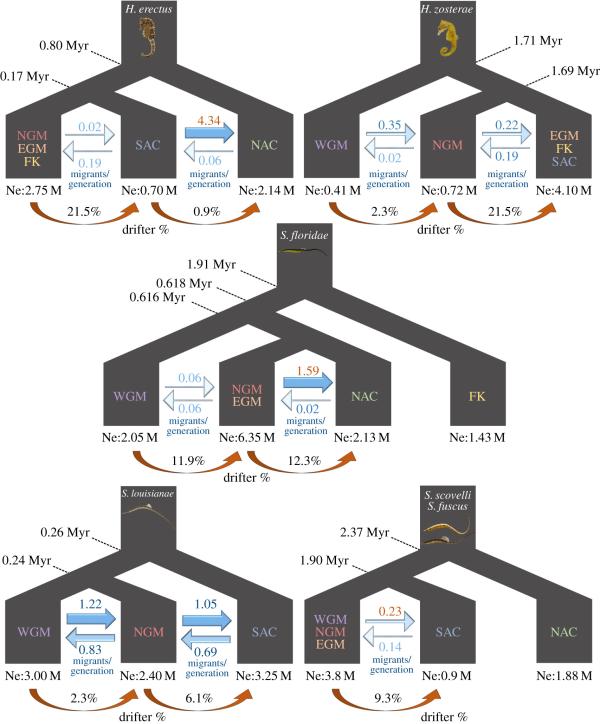
Based on genomic data for each of the species, the researchers built demographic models including information on population size and gene flow.
The direction of ocean currents can determine the direction of gene flow in rafting species, but this depends on species traits that allow for rafting propensity. This is according to a City College of New York study focusing on seahorse and pipefish species. And it could explain how high genetic diversity can contribute to extinction in small populations.
Published in the British-based journal “Proceedings of the Royal Society B,” the paper by City College scientists led by Michael Hickerson and Laura Bertola is entitled: “Asymmetrical gene flow in five co-distributed syngnathids explained by ocean currents and rafting propensity.”
It reveals that ocean circulation driving macro-algal rafting is believed to serve as an important mode of dispersal for many marine organisms. This leads to predictions on population-level genetic connectivity and the directionality of effective dispersal.
The CCNY Division of Science researchers used genome-wide single nucleotide polymorphism data to investigate whether gene flow directionality in two seahorses (Hippocampus) and three pipefishes (Syngnathus) follows the predominant ocean circulation patterns in the Gulf of Mexico and northwestern Atlantic. They also explored whether gene flow magnitudes are predicted by traits related to active dispersal ability and habitat preference.
“We inferred demographic histories of these co-distributed syngnathid species, and coalescent model-based estimates indicate that gene flow directionality is in agreement with ocean circulation data that predicts eastward and northward macro-algal transport,” said Hickerson. “However, the magnitude to which ocean currents influence this pattern appears strongly dependent on the species-specific traits related to rafting propensity and habitat preferences.”
The study, he said, highlights how the combination of population genomic inference together with ocean circulation data can help explain patterns of population structure and diversity in marine ecosystems.
About the City College of New York
Since 1847, The City College of New York has provided a high-quality and affordable education to generations of New Yorkers in a wide variety of disciplines. CCNY embraces its position at the forefront of social change. It is ranked #1 by the Harvard-based Opportunity Insights out of 369 selective public colleges in the United States on the overall mobility index. This measure reflects both access and outcomes, representing the likelihood that a student at CCNY can move up two or more income quintiles. In addition, the Center for World University Rankings places CCNY in the top 1.2% of universities worldwide in terms of academic excellence. Labor analytics firm Emsi puts at $1.9 billion CCNY’s annual economic impact on the regional economy (5 boroughs and 5 adjacent counties) and quantifies the “for dollar” return on investment to students, taxpayers and society. At City College, more than 16,000 students pursue undergraduate and graduate degrees in eight schools and divisions, driven by significant funded research, creativity and scholarship. CCNY is as diverse, dynamic and visionary as New York City itself. View CCNY Media Kit.